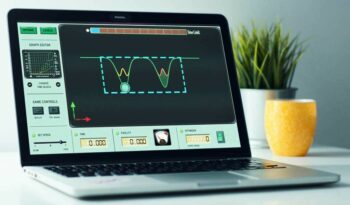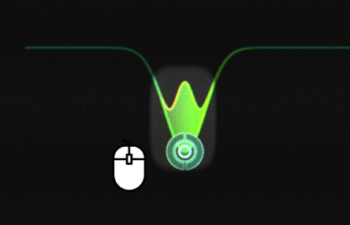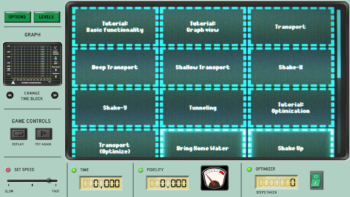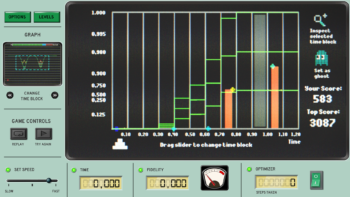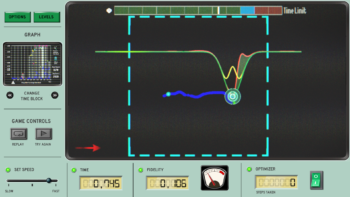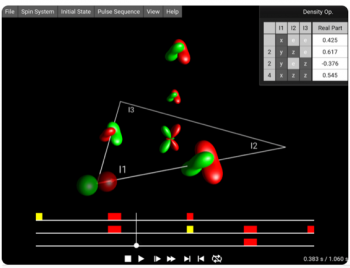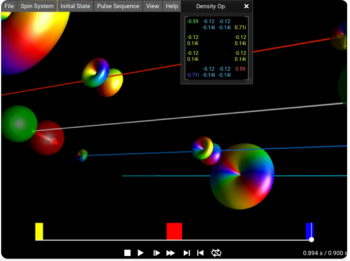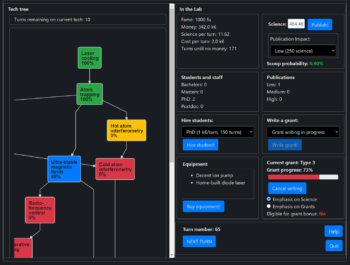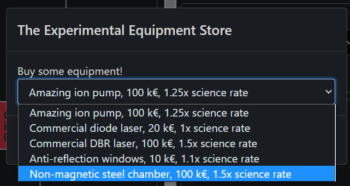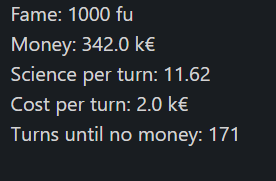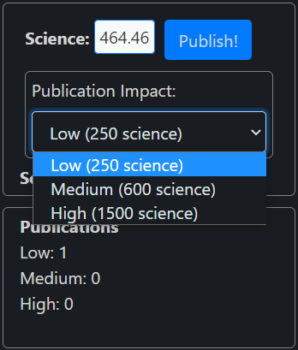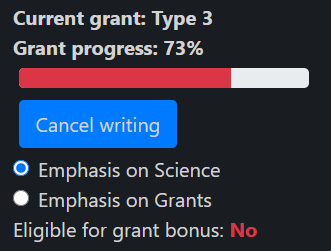
Games
We have adapted two existing and highly successful quantum outreach initiatives–the www.scienceathome.org platform and the SpinDrops app for iphones–into new high-quality games and visualizations on central topics of QuSC. This effort will be supported by the Center for Community Driven Research (CODER) at AU which produces online games with the focus of involving ordinary citizens in the solution of concrete research challenges—a process called citizen science, and by TUM.Gamification is not only a major source of inspiration and engagement of the general public, but it also boasts significant scientific potential. This has been highlighted by the first analysis of player results, which systematically outperform state-of-the-art optimization algorithms even though the players have no formal quantum physics training.16 Overall, CODER games have been played more than 8 million times by more than 170,000 citizens. To optimize the learning outcome of game-based education in quantum and classical physics, the games have been embedded in specially designed learning trajectories which guide the learner through the learning process via a combination of games, animations, questions, text bits, and videos. These have been previously tested at levels ranging from primary and high school to university and will be extended to QuSCo’s more advanced theme. The SpinDrops app, so far downloaded 2500 times, is a unique and very general visualization approach that helps to build intuition about free and controlled dynamics of quantum systems consisting of coupled spins and provides immediate feedback to the user about the effect of varying control fields. The planned extension of the currently NMR-focused app to quantum control for quantum sensing offers highly intuitive training opportunities for members of QuSCo as well as interested physics and engineering students. Inclusion of gamification concepts has the potential to make SpinDrops attractive also to the general public and provides an additional nice point of entry for school- and university-level students to the world and ideas of the ongoing second quantum revolution. The substantial public appeal and media attention of these projects (more than 100 press appearances over the past 4 years) clearly demonstrate the appropriateness and timeliness of such a communication strategy.
Quantum Moves 2
Quantum Moves 2 is a gamified citizen science project about quantum optimal control. It is based on simulation of atoms where the challenge is to transfer atoms in the best possible way from an initial state to a desired target state within very short timescales in a quantum laboratory. In the world of quantum physics, this is the complex task called quantum optimal control. The idea of the game is quite simple: in every game-play, the mouse movements simulate the movement of laser beams or other components of an experimental setup used in quantum labs to control and transfer atoms. Every game-play creates a solution, which appears as data at our end describing how well the atom was controlled. These solutions can contribute in the research of quantum optimal control in ultra-cold single atom and BEC experiments related to quantum computing and quantum sensing. If you would like to read further, you can click on this link: https://www.scienceathome.org/games/quantum-moves-2/science-behind-quantum-moves-2/
Download:
Windows version: https://filestorage.scienceathome.org/?/files-pub/K87ueXYFd
Mac version: https://filestorage.scienceathome.org/?/files-pub/nwjjsd6rK
Spindrop
SpinDrops is a real-time spin simulation environment to explore and elucidate the dynamics and control of spin systems. The purpose of this easy to use app is to understand how spin states and their correlations can be manipulated using electromagnetic fields. The spins of atomic nuclei and of electrons are physical realizations of quantum bits (qubits). The ability to precisely control spin systems enables the emerging field of quantum technologies with applications such as quantum sensing, quantum computing. SpinDrops uses a unique visualization technique called DROPS representation, that translates the abstract matrices representing quantum states and quantum operators into descriptive three-dimensional drop-like shapes. These shapes illustrate the creation, deformation and rotation of spin coherences and of spin-spin correlations under the influence of controllable magnetic fields. The extremely responsive interactive visual representations of the effect of experimental allows the users to gain intuition about the response of spin systems to experimentally available control fields. In addition to providing many useful graphical diagnostic tools to analyze and to understand quantum-control sequences, SpinDrops also allows the users to automatically optimize such pulse sequences using optimal-control based numerical algorithms.
SpinDrops is available free of charge for macOS, Android, iOS, Windows, or in web browsers supporting WebGL. For more detailed information about the program, see www.spindrops.org.
Download:
Lab Manager
Lab Manager is a turn-based simulation game where you take the role of a researcher managing an atomic physics laboratory. The game simulates a scenario of research management where you have to strike a balance between conducting novel research, hiring manpower, buying equipment, and applying for grants to conduct ultra-cold atom experiments. The intention is to illustrate the different components, choices, and difficulties faced by researchers in their professional life while running a laboratory. This may include for example: How does one choose between buying a laser or building one on their own? What is the optimal number of people needed in the lab? Similarly, in the game, you encounter trade-offs, uncertainties, and strategies to successfully run the laboratory. The game is won when you get ultracold atoms in space, as in the Cold Atom Lab on the International Space Station before your lab runs out of money and resources! During the gameplay, you also learn about many technologies and experimental techniques, starting from cooling to trapping atoms to performing ultra-cold atomic experiments. Each time you unlock a new technology to investigate, the game has a pop-up with educational content describing each technology, how it works, and why it is useful. If you would like to read further, you can click on this link: https://www.scienceathome.org/games/lab-manager/.



